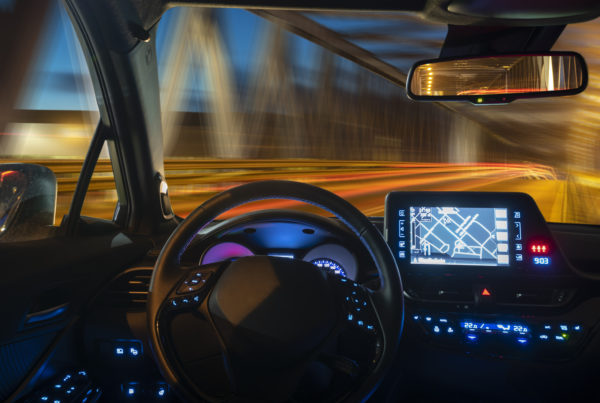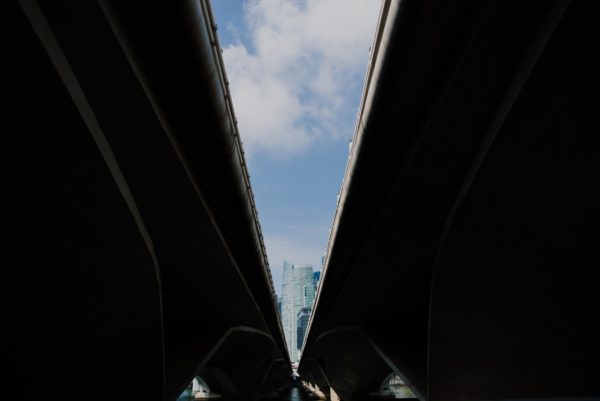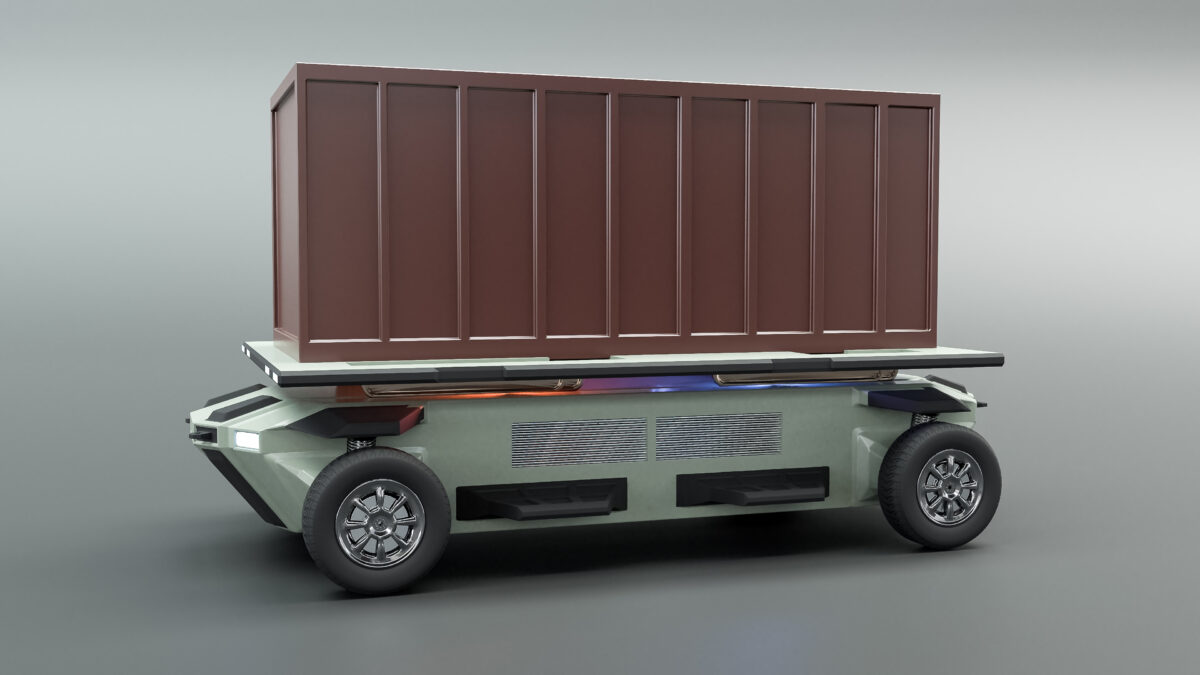


On the ‘Edge’ with Driverless Cars
How soon will it be before you pull up at a stop light in your car, and the car next to you has no one behind the wheel? Maybe sooner than you think.
One of the most interesting conversations I’ve had in recent months is with Bryan Mistele, founder and CEO of INRIX, the Seattle-based company that pioneered managing traffic by analyzing data from vehicles as well as road sensors. INRIX is now one of the leading providers of real-time parking and traffic information to your automobile — and they’ll be doing the same with driverless cars, or as the industry prefers to dub them, autonomous vehicles (AVs).
Mistele reminded me that AV’s are already on the road. Working with INRIX, Las Vegas was the first city to have an autonomous shuttle that opened in 2017, and Denver launched one near Denver International Airport in January 2019.
Talking to an expert like Mistele makes you realize there’s nothing magic about AVs. It’s all about sensors, data, computing power, and connectivity — and ultimately the security of that data and those connections, which can either take us all to the next level of a brave new technological world, or plunge us into chaos.
For example, the experts talk about the transition to AVs is in terms of levels. Level 1 includes built-in “autonomous” capabilities like adaptive cruise control; Level 2 is where two or more autonomous functions (for example, adaptive cruise control plus auto emergency braking) come together in a single vehicle.
At Level 3 the car still needs a driver to keep eyes on the road, but the car handles most tasks by itself, for example highway driving, and even can do the principal driving to get you from home to work and back. That’s where most of us will be in the next five years.
At Level 4 the car won’t need a driver except under certain conditions—for example with changes in the weather or road conditions like black ice or a gravel surface which the typical AVs’ optical sensors have trouble detecting. Most self-driving vehicles being tested today fit this description, while companies like Tesla continue to push on to Level 5, the nirvana of the AV engineer. That’s where the car does it all under all conditions, with you being the passenger the way your “baby on board” is now: free to read, sightsee, or sleep without giving the actual driving a second thought.
Read More ›
Will the Rise of the Eastside Eclipse the Seattle Boom?
The Eastside has long been eclipsed by Seattle. Now, however, it is challenging the big city on several fronts. The reasons are many: Microsoft’s revival; global tech companies opening engineering offices on the Eastside; the openness of Eastside local governments to new technologies; Seattle’s problems of homelessness, crime, traffic and subpar public schools; and the Seattle City Council’s hostile actions and rhetoric directed at tech companies.
For much of Seattle’s history, the Eastside provided bedroom communities for Seattle. The only top-ranked local university and all the major cultural institutions, headquarters for businesses, banks, law firms and best restaurants were located in Seattle.
Forty years ago, Bill Gates and Paul Allen, who grew up in Seattle, moved Microsoft from Albuquerque, New Mexico, to the Eastside. As it grew, Microsoft built a sprawling campus between Bellevue and Redmond, a typical suburban office park of its era devoted exclusively to Microsoft offices, with no Starbucks, independent workout clubs or restaurants. These amenities were a drive away. Microsoft workers settled into Eastside cul-de-sacs and, as their wealth grew, they moved into lakefront homes. Early tech companies tended to locate on the Eastside, partly to be in Microsoft’s shadow and because office space was cheap. Employees’ schools and social activities were east of the lake and they visited downtown Seattle as if it were a foreign country.
But Microsoft didn’t shake Seattle’s dominance. Beginning about 20 years ago, the company began to lose its tech primacy, as Amazon.com, locating itself in downtown Seattle, became a magnet for young, talented workers more interested in urban amenities than backyards. Amazon (of which I’m a board member) grew to match Microsoft in size, but instead of its campus being an isolated suburban office park, its buildings were intermixed with a vibrant urban area brimming with Starbucks, restaurants, tech and biotech companies and smart young people. Many Amazon employees were happy to live in small apartments and, when they outgrew those, they bought single-family homes (with backyards) in Seattle neighborhoods. They began adding bedrooms, patios and remodeled kitchens, transforming neighborhoods from low- and middle-income families to increasingly high-income tech workers.
Amazon and Seattle became the place to be as Microsoft lost its excitement and reputation for innovation. In 1998, three years after Amazon began selling books though the internet, Microsoft was the most valuable company in the world and so dominant that the Justice Department sued to break it up on charges that it had abused its monopoly power. In 2006, Amazon caught Microsoft (and IBM and Google) flatfooted when it launched its cloud-computing service, Amazon Web Services. Microsoft stumbled with its ill-advised purchase of Nokia, and although Amazon stumbled when it launched its own cellphone, it recovered with a successful Kindle reader and Fire TV, followed by Alexa, a voice-operated information and control system, which again surprised Microsoft, Google and Apple. Amazon passed Microsoft in market value and became the second company, after Apple, to exceed a trillion-dollar valuation.
Over the years, more than 100 global tech and other companies followed the tech talent to the Seattle area and opened important software engineering offices. Some were on the Eastside but many more chose Seattle. In the process, the City of Seattle’s revenues grew enormously, from $2.8 billion in 2010 to $4.2 billion in 2017.
But all is not well in Seattle. School district statistics show significant disparities in public pre-K-12 schools achievement when comparing children of color and low-income families, while surveys show benchmarks of school quality have not improved much over the years. Homelessness has grown rampantly, with tent cites locating in middle-class neighborhoods, and crime and needles littering parks and playgrounds. Traffic has worsened downtown and on commuter routes. Based on Seattle police statistics, violent crime increased in Pioneer Square by 13 percent from the 2008-2010 to 2015-2017 time period.
Seattle and its citizens want to fix these social problems but have become frustrated with the City of Seattle’s inability to do so. This boiled over when the Seattle City Council and mayor passed a head tax on employers. Large and small businesses, as well as citizens, rose up in opposition. When they gathered 46,000 signatures in a few weeks, and poll results showed overwhelming voter disapproval, the city council, with the mayor’s support, repealed the tax. In response, Amazon lifted its hold on construction of new buildings.
Nonetheless, the sharp divide between Seattle’s business community and city council remains, and although Amazon has canceled its decision to locate major offices in Queens, New York, it has reaffirmed plans to locate at least 25,000 employees in Crystal City, Virginia, 10 minutes by subway from downtown Washington, D.C. It also said it intends to grow its 17 corporate offices and tech hubs across the U.S. and Canada.
Read More ›
Transportation Technology Can Deliver Us From Viaduct Closure Gridlock
Seattle is facing a dire transportation crisis with the Jan. 11 closing of the viaduct, politely dubbed the “Period of Maximum Constraint” (POMC). While commuters, employers and school officials are busy making contingency plans, why not take advantage of this moment to tackle some of our traffic congestion problems with creative solutions that might not be possible in normal times.
Read More ›When Does the Viaduct Close? How Much is the tunnel toll? Your Guide to Seattle’s Highway 99 Project
The following article references Discovery Institute’s own Bruce Agnew. Check it out at The Seattle Times.
Self-Driving Vehicles May Be the Answer to Seattle-Area Traffic Problems
I-5 Stretch Running Through Pacific Northwest is the Best Route for Self-Driving Trucks, INRIX Study Finds
When we envision our self-driving future, cars with built-in entertainment systems buzz us to and from work, while flying Ubers drop off passengers nearby. But the reality of the first commercial autonomous vehicles to arrive on our streets will probably be less sci-fi, more practical. Researchers at INRIX set out to discover which routes are most practical for commercial AVs — specifically freight trucks — in a new study released Monday. They analyzed trip data from the Kirkland, Wash. company’s traffic database between June to August of 2018. They wanted to find out which freight routes in the U.S. could see the biggest safety improvements from AVs and which would be the most commercially viable to the companies operating them. This article …
Bellevue Envisions Fleet of Driverless Vans to Help Commuters Skirt Congestion
Just this month, in Ann Arbor, Michigan, a driverless van began shuttling students and staff the 1-mile round trip between a research complex and a distant parking lot and bus stop. In Las Vegas, an autonomous van launched last year, taking curious passengers on a three-block loop between a downtown retail park and Las Vegas Boulevard. In San Ramon, California, two driverless shuttles began circulating in March through a nearly 600-acre cluster of office parks. Autonomous shuttle pilot projects are sprouting in myriad locations across the country, gauging people’s reactions and trying to increase their comfort with driverless transit. Bellevue wants in, too.
How AI Will Pave the Way to Autonomous Driving
Artificial intelligence will enable vehicles to manage, make sense of, and respond quickly to real-world data inputs from hundreds of different sensors, but it’s going to take some time.

Concerns Over Sharing the Road with Driverless Semis
Bruce Agnew of the ACES Northwest Network spoke to KIRO 7 News about why autonomous semi-trucks will actually make our roads safer.
